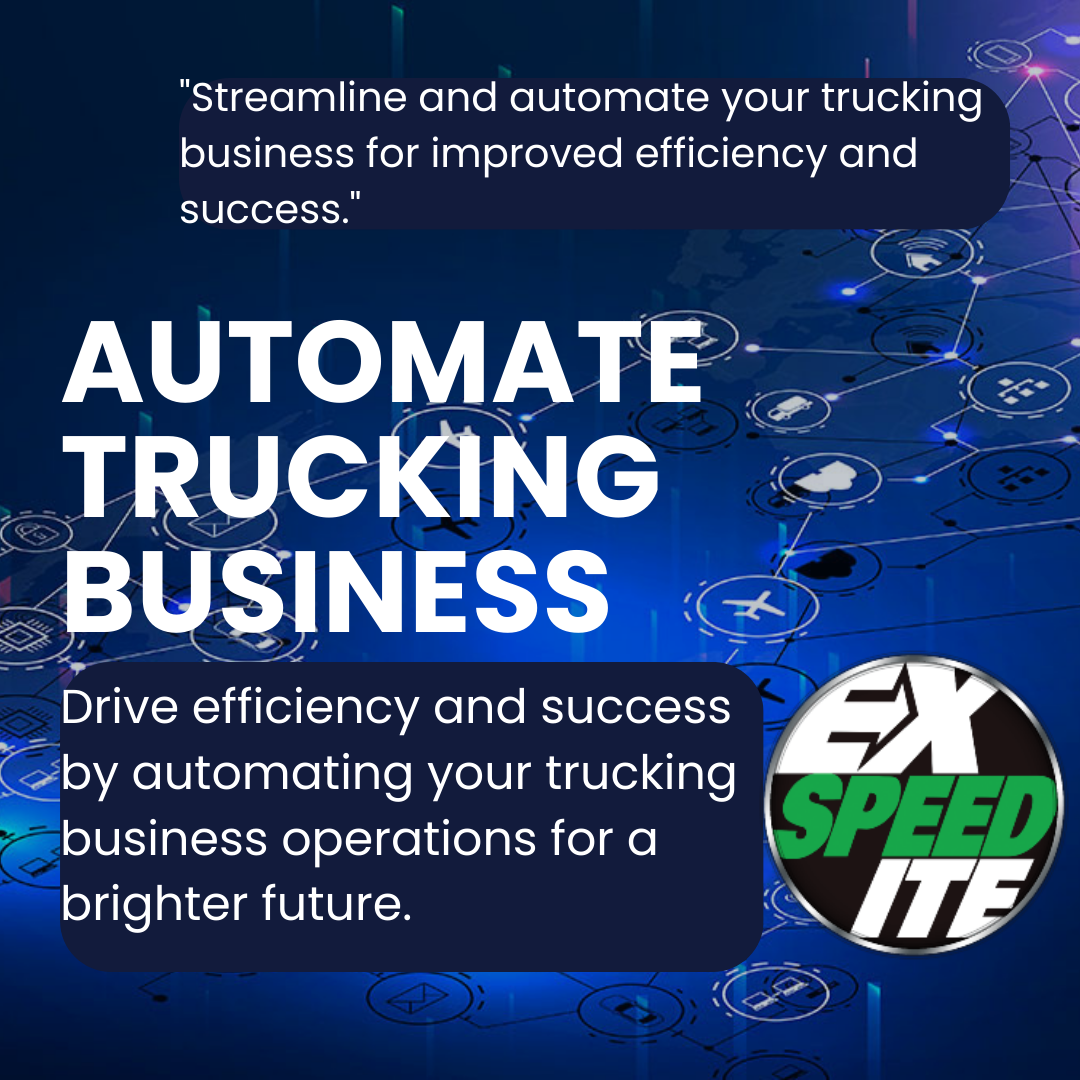Automating your transportation business with a Transportation Management System (TMS) is a game-changer in the logistics industry. It streamlines and optimizes various aspects of your operations, allowing for enhanced efficiency, cost reduction, and improved customer service. Here’s how you can automate your transportation business using a TMS:
1. Trucking Dispatch System: Plan, Create, and Notify
A TMS centralizes dispatch operations. It enables efficient load planning, automates route optimization, and assigns drivers to jobs. This unified solution simplifies communication and streamlines the entire dispatch process. Drivers receive real-time notifications, ensuring timely deliveries and reducing manual intervention.
2. Account Management System: Real-time Financial Control
Manage your income, expenses, and settlements in real-time with a TMS. Exspeedite’s Trucking software records financial transactions, automates invoicing, and tracks payments and expenses. This real-time financial control reduces errors, enhances transparency, and simplifies financial management.
3. IFTA Reporting: Automated Fuel Tax Reporting
TMS automates the generation of detailed IFTA reports using dispatch or Electronic Logging Device (ELD) data. It streamlines the often complex and time-consuming process of fuel tax reporting, ensuring compliance and reducing the risk of penalties.
4. Driver Management System: Streamline Driver Operations
Assigning dispatches, updating job statuses, and tracking driver expenses becomes more efficient with a TMS. It provides a platform for drivers to access their assignments, reducing phone calls and streamlining communication. The system also tracks driver performance and compliance with Hours of Service (HOS) regulations.
5. Trucking Maintenance: Ensure Fleet Health
TMS helps you keep track of maintenance schedules for all your trucks. It sends automated notifications for routine maintenance, reducing the risk of unexpected breakdowns and costly repairs. Regular maintenance ensures a healthy and reliable fleet.
6. Load Board Integration: Access Loads Seamlessly
Integrate with load boards to search for available loads, communicate with shippers or brokers, and finalize load assignments. This feature simplifies the load booking process and helps you secure more business opportunities.
7. Business Intelligence: Data-Driven Decisions
Access detailed business reporting within the TMS. Analyze key performance indicators (KPIs) and historical data to make informed decisions. Data-driven insights help you identify areas for improvement and optimize your operations continually.
8. Driver Mobility Solutions: Dispatch and Invoice Anywhere
With driver mobility solutions, dispatching, invoicing, and expense tracking can be done from anywhere. This flexibility and accessibility increase driver and operational efficiency, improving overall productivity.
9. Digital Document Management: Secure Data Accessibility
Store and access all your documents securely in one place. This digital document management feature eliminates paperwork, reduces the risk of document loss, and simplifies record-keeping and compliance.
10. Integrations: Improve Efficiency and Reduce Data Entry
Integrate your TMS with other systems like Enterprise Resource Planning (ERP) and Warehouse Management Systems (WMS). This seamless data flow eliminates manual data entry and ensures accurate and up-to-date information across your systems.
In conclusion, a Transportation Management System is a vital tool for automating your transportation business. It centralizes and streamlines various operations, from dispatch and financial management to maintenance and compliance. By investing in a TMS, you enhance efficiency, reduce costs, improve decision-making, and ultimately ensure the success and growth of your transportation business.
How Truckload Management Solutions Work
Manage trucking dispatch processes
Managing trucking dispatch processes involves centralizing operations through a Transportation Management System (TMS), planning loads efficiently, assigning drivers based on availability and skills, maintaining real-time communication, optimizing routes, tracking deliveries, ensuring compliance with hours of service, keeping accurate documentation, providing excellent customer service, conducting data analysis for continuous improvement, and implementing automation where possible to streamline routine tasks and enhance overall operational efficiency.
Automatic Invoice Management
Automatic invoice management is a game-changer for trucking businesses. With the right software and systems in place, the entire invoicing process, from generating invoices to sending them to clients and tracking payments, becomes a seamless and efficient operation. This automation eliminates the need for manual data entry, reduces errors, and accelerates the billing cycle, leading to improved cash flow and financial control. Trucking companies can easily customize invoice templates, include relevant details such as rates, miles driven, and fuel costs, and set up recurring invoicing for regular clients. Additionally, automatic reminders for overdue payments help ensure timely settlement. Overall, this automated approach simplifies administrative tasks, frees up valuable time, and enhances the financial management of the business, contributing to smoother operations and improved profitability.
Faster and More Accurate IFTA Reporting
Faster and more accurate International Fuel Tax Agreement (IFTA) reporting is critical for trucking companies. Implementing a dedicated IFTA reporting software solution streamlines the process by automatically compiling fuel purchase and mileage data, calculating tax liabilities for each jurisdiction, and generating comprehensive reports. This automation reduces the risk of errors, minimizes time-consuming manual calculations, and ensures compliance with IFTA regulations. By simplifying IFTA reporting, trucking companies can maintain precise records, minimize audit risks, and save valuable time and resources, ultimately optimizing their operations and financial management.
